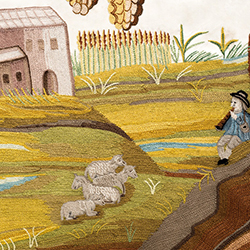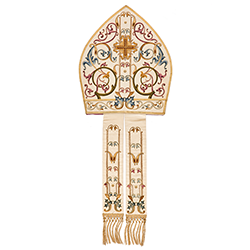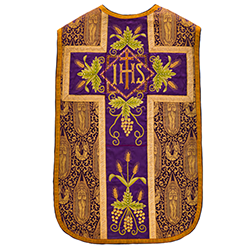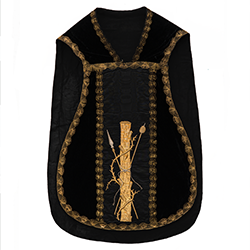
by Algimantas | Apr 22, 2018
Chasuble. Lithuania, 1792–1799. Vilnius Cathedral. Embroidery with silk threads and other embroidery techniques The chasuble with classical-style embroidery shows the influence of painting compositions and themes of the given period. It is embroidered in silk with...

by Algimantas | Apr 22, 2018
Mitre. Lithuania, second half of the 19th c. Vilnius Cathedral. 19th c. Professional versus amateur The 19th century is characterized by a large variety of styles and techniques. In Lithuania, the persisting tradition of Baroque was reflected in the decoration of...

by Algimantas | Apr 22, 2018
Chasuble. Lithuania, middle of the 20th c. Ascension of Christ Church in Eišiškės. 20th c. Tradition or change In the first half of the 20th century, the appearance of liturgical vestments developed along the lines formed in the 19th century, but a hundred years in...

by Algimantas | Apr 22, 2018
Chasuble. Lithuania, 3rd – 4th decade of the 20th c. Church of Saints Peter and Paul the Apostles in Vilnius. 20th c. Tradition or change In the first half of the 20th century, the appearance of liturgical vestments developed along the lines formed in the 19th...

by Algimantas | Apr 22, 2018
Chasuble. Lithuania, circa 1909. Church of St. Anne in Vilnius. Symbols of faith The Instruments of the Passion (Arma Christi) – the whipping column, a rope, a branch of thorns, a spear and a sponge – are embroidered on the front. This decoration of liturgical textile...







Recent Comments